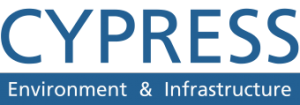Coastal zones are home to various rich and diverse ecosystems at the intersection of land and water. However, these vibrant areas face mounting challenges stemming from rapid development, shoreline erosion, and the ever-encroaching impacts of climate change. So, this is where the application of GIS in coastal zone management comes into play.
Here at Cypress Engineering, we believe that harnessing the potential of geospatial technology is the linchpin to tackling these coastal complexities head-on. From tracking shoreline changes to modeling storm impacts, GIS provides data-driven insights to balance utilization and conservation of coastal resources.
In this article, we will delve into coastal zone management and how GIS technology, a core component of our expertise, plays an important role.

Understanding Coastal Zone Management
Coastal zone management refers to the comprehensive and strategic planning, utilization, and protection of coastal areas where land and sea meet. These regions are ecologically sensitive and often experience high human activity due to their economic, recreational, and environmental value.
Coastal zone management aims to strike a delicate balance between facilitating sustainable development, protecting fragile ecosystems, and mitigating the risks associated with coastal living. It encompasses a range of activities, including land-use planning, infrastructure development, conservation of natural habitats, and disaster preparedness.
Balancing development and environmental conservation
One of the primary challenges of coastal zone management is the harmonious coexistence of development and environmental conservation. Coastal areas attract businesses, tourism, and residential communities due to their picturesque landscapes and abundant resources.
However, unchecked development can lead to habitat destruction, erosion, pollution, and the increased vulnerability of coastal regions to natural disasters. Achieving this balance is essential for the long-term health of these regions and the well-being of their residents.
The role of GIS in aiding the balance
Geographic Information System (GIS) technology is important in managing coastal zones effectively. GIS enables the collection, storage, analysis, and visualization of spatial data related to coastal regions.
At Cypress Environment & Infrastructure, we integrate various data sources. GIS allows coastal zone managers to make informed decisions considering development and conservation aspects. GIS facilitates the identification of ecologically sensitive areas.
Moreover, GIS for coastal zone management assists in monitoring and responding to environmental changes. Integrating GIS into coastal zone management is a significant step toward achieving a balance between human activities and the preservation of coastal ecosystems.
Application of GIS in Coastal Zone Management
GIS technology offers a wide range of applications tailored to the unique challenges of coastal zone management. Some key applications include:
- Coastal mapping – GIS plays a crucial role in mapping coastal areas accurately. It allows for creating detailed maps that include data on coastal topography, shorelines, and habitat distribution.
- Habitat and ecosystem analysis – Environmental assessments are vital for understanding coastal ecosystems. GIS aids in collecting and analyzing data related to ecosystems, aiding in their preservation and restoration.
- Climate change studies – As coastal areas are highly susceptible to climate change impacts, GIS is used to monitor and assess changes in sea levels, temperature, and other environmental variables.
- Disaster preparedness – Coastal areas are prone to natural disasters like hurricanes and tsunamis. GIS helps in identifying vulnerable regions, developing evacuation plans, and coordinating disaster responses.
Real-world examples of GIS applications
Real-world examples highlight the versatility of GIS in coastal zone management. Coastal communities worldwide have used GIS technology for various purposes. For instance, GIS is used to monitor and address shoreline erosion in vulnerable coastal regions.
It helps identify at-risk areas and implement measures to protect coastlines and property. Additionally, GIS technology has managed fisheries sustainably, ensuring the balance between fishing activities and preserving aquatic ecosystems.

Benefits of GIS in Coastal Zone Management
The benefits of incorporating GIS technology into coastal zone management include:
Efficient data collection
GIS simplifies data collection through various sources, such as satellites, drones, and remote sensors. This streamlines the acquisition of critical geospatial data.
Effective monitoring
GIS provides real-time monitoring capabilities, allowing managers to track changes in coastal conditions, including water quality, erosion, and land-use alterations.
Predictive modeling
Coastal managers can employ GIS to create predictive models for assessing the future impact of human activities and environmental changes.
Cost-effectiveness
In the long term, GIS proves cost-effective by improving decision-making, reducing emergency response times, and minimizing the need for costly, manual data collection methods.
Challenges and Limitations of Application of GIS in Coastal Zone Management
While GIS is a powerful tool, it does come with its set of challenges and limitations in the context of coastal management. They include:
- Data accuracy – The accuracy of GIS outputs depends on the quality of the input data. Only accurate or updated data may lead to correct assessments.
- Software limitations – GIS software may have limitations, such as a steep learning curve or compatibility issues with other software systems.
- Accessibility – Some regions may have limited access to GIS technology due to financial or infrastructure constraints.
The importance of addressing challenges
Addressing these challenges is vital. The accuracy of data should be regularly validated and updated. Users must receive adequate training to harness the full potential of GIS technology.
Additionally, efforts should be made to improve accessibility to GIS tools in regions where it can significantly benefit coastal zone management.

Conclusion
Application of GIS in coastal zone management is the key to balancing development while preserving the environmental integrity of our coastal zones. It guides us toward a harmonious coexistence with our coastal environments.
As we face the challenges of a changing climate and environmental conservation, GIS serves as a beacon of hope and progress. Various applications of GIS in coastal zone management help safeguard the fragile ecosystems that line our coasts.
We encourage you to explore the powerful applications of GIS, using it as a compass to navigate the complexities of coastal zone management. Together, we can chart a sustainable course for our coastlines and foster a brighter future for generations to come through the application of GIS in coastal zone management.
